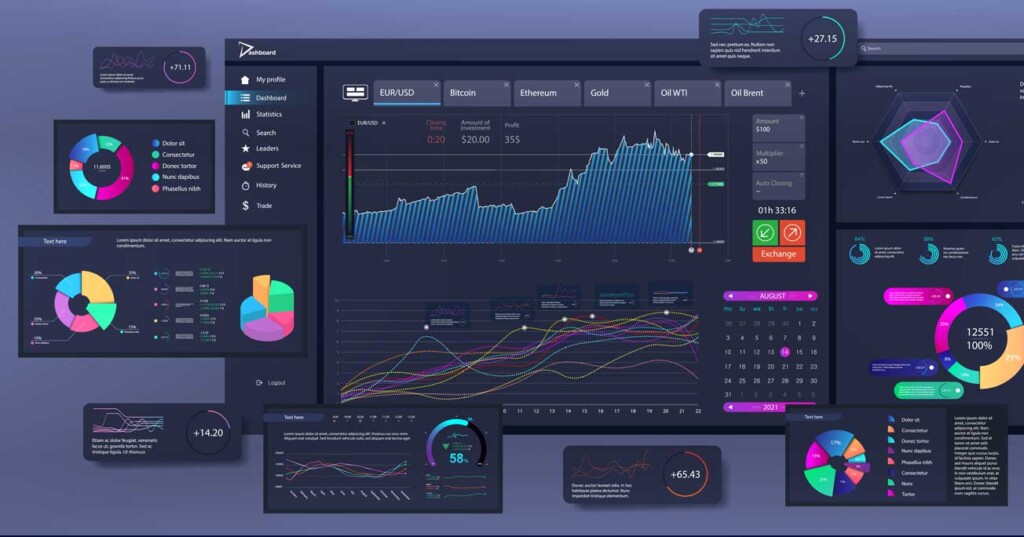
What Is A Web Application
Table of Contents
TLDR
This article covers the essence and importance of web applications, highlighting their versatility, scalability, and the democratisation of the digital space.
It outlines the evolution from static websites to dynamic web applications facilitated by advancements in scripting languages.
The article also delves into the technical foundations, including client-server architecture and scripting, and explores various types of web applications like e-commerce platforms and CMS.
Finally, it addresses future trends, including Progressive Web Apps and AI integration.
What Is A Web Application

Web applications are a seamless online experience. These applications, accessible via web browsers, are the backbone of our daily digital interactions, from firing off a quick email to managing complex business operations on the go.
The Essence of Web Applications
At their core, web applications are sophisticated computer programs that leverage modern browsers and web technology to perform many tasks over the Internet. Unlike traditional software that demands installation on a physical computer, web apps reside on a remote application server and are accessed through the web. This fundamental difference not only makes web applications universally accessible but also updates them a breeze. My fascination with web applications stems from their inherent versatility and scalability, qualities that make them indispensable in both personal and professional realms.
Why They Matter More Than Ever
They offer businesses and individuals the ability to maintain a dynamic online presence. They have democratised the digital space, enabling small startups to compete with tech giants by providing innovative services like subscription based web applications accessible to a global audience. From a technical standpoint, the evolution of web app development technologies, frameworks, and methodologies has significantly lowered the barriers to creating robust, secure, and scalable applications.
• • •
Understanding Web Applications

Defining Web Applications
They are computer programs utilising web browsers and web technology to perform online tasks. It’s built on a client-server model, where the client is the user interface, and the server handles the backend processes, interacting through the web instead of local computing resources.
From Static to Dynamic
The journey from static websites, which merely displayed content, to dynamic web applications marks a significant evolution in web technology. Initially, websites were composed of static HTML pages with no interactive elements. Today, web applications offer interactive experiences akin to desktop applications but with the added advantages of web deployment.
This transition has been facilitated by advancements in client-side and server-side scripting languages (such as Node, JavaScript, Python, and Ruby), allowing for real-time content updates, user interaction, and data processing without page reloads. This evolution has enhanced user experience and expanded the possibilities for creating sophisticated, scalable web-based applications.
• • •
Technical Foundations

Client-Server Architecture: The Backbone
At its core, the client-server architecture is a distributed framework that partitions tasks or workloads between providers of a resource or service, known as servers, and service requesters, called clients.
This architecture is the backbone of web applications, enabling the seamless interaction between the user’s device and the server hosting the application. It’s fascinating how this model facilitates communication over the internet, with the server processing requests and sending back responses that the client renders into the web pages we interact with.
The Dance of Client-Side vs. Server-Side Scripting
Understanding the distinction between client-side and server-side scripting was a game-changer for me. Client-side scripting refers to the code that runs in the web browser, directly impacting what users see and interact with on their screen.
Server-side scripting, however, operates behind the scenes. This is where the application’s logic resides, handling the heavy lifting of data processing, storage, and retrieval. Languages like Node.js (a runtime environment that executes JavaScript code server-side), Python, Java, and Ruby, have become my allies in developing the server-side logic. Each language has nuances and strengths, but they all share the common purpose of managing the application’s data and ensuring that the client side has the necessary information to present to the user.
Client-Side Languages
- JavaScript: The quintessential language of the web, JavaScript breathes life into web pages, making them interactive and dynamic. From simple scripts to complex applications, JavaScript is omnipresent in the browser.
Frameworks and Libraries:
- React: A JavaScript library developed by Facebook, React is renowned for its efficient, declarative, and flexible approach to building user interfaces. It’s my go-to for crafting rich, engaging web experiences.
- Angular: A platform and framework for building single-page client applications using HTML and TypeScript. Angular offers a comprehensive solution with tools and libraries covering everything from testing to client-server communication.
- HTML5: The latest evolution of HTML, HTML5, introduces more descriptive semantic tags, making it easier to structure content and multimedia. It’s not just about markup; HTML5 includes APIs for complex web applications.
- CSS: Cascading Style Sheets (CSS) is the skin of the web. It allows for the styling of HTML elements, making them visually appealing. With CSS3, the latest version, we have more control over layouts, animations, and responsive designs than ever.
Server-Side Languages
- PHP (Hypertext Preprocessor): specifically for web development but also used as a general-purpose programming language. PHP is widely known for its ease of use, efficiency, and compatibility, which makes it an excellent choice for creating dynamic web pages and applications. It integrates seamlessly with many databases, has a vast ecosystem of frameworks (such as Laravel and Symfony), and supports many web development features, including session management, form handling, and file upload.
- Node.js: It is not just a language but a runtime environment that allows JavaScript to be used on the server side. Node.js has changed the game by enabling JavaScript to perform backend tasks, making development more streamlined and cohesive.
- Python: Known for its readability and simplicity, it is a server-side powerhouse. With frameworks like Django and Flask, Python makes web application development efficient and scalable, ideal for everything from small projects to large enterprise applications.
- Java: A stalwart in the programming world, Java’s write-once-run-anywhere philosophy makes it a solid choice for server-side development. Its robustness, security features, and extensive libraries and frameworks, such as Spring and Hibernate, have solidified its place in enterprise environments.
- Ruby: Ruby, particularly with the Ruby on Rails framework, offers a convention over the configuration approach, simplifying and accelerating web application development. It’s particularly appreciated for its elegant syntax and the rapid development cycle it supports.
I’ve found that choosing the right language and framework for a project depends on various factors, including the project’s specific requirements, scalability needs, and the development team’s expertise. While I have my preferences, I believe in using the best tool for the job, constantly learning, and adapting to the project’s needs. Each language and framework mentioned here has unique advantages, and mastering them has been an ongoing, rewarding challenge.
• • •
The Development Process

The web application development journey is an intricate dance of planning, execution, and evolution. From my experience, understanding the lifecycle is crucial for ensuring that the final product meets the initial requirements and remains flexible and scalable for future needs.
The Lifecycle of Web Application Development
- Planning and Analysis: This initial stage involves gathering requirements, defining the scope, and planning out the web application’s architecture. It’s a critical phase where decisions will affect the entire project.
- Design: The user interface and user experience (UI/UX) are crafted here. It’s about translating the requirements into a blueprint for the application, focusing on how users will interact with it.
- Development: This phase is where the actual coding happens. Client-side languages like React, Angular and JavaScript and server-side languages like Python or Node.js come into play. It’s an iterative process involving building features, testing, and revisiting earlier steps as needed.
- Testing: Rigorous testing ensures the application is robust, secure, and user-friendly. From unit testing to integration and performance testing, this stage is about ironing out any issues before launch.
- Deployment: Once tested, the application is deployed to the server. This phase may also involve setting up the production environment and optimising the application’s performance.
- Maintenance and Updates: Post-launch, the application enters a phase of ongoing maintenance, requiring regular updates and new features to meet user needs and adapt to technological advances.
- Efficient Development and Scalability: Adopting an agile methodology has allowed for efficient development. It supports an iterative approach, enabling teams to adapt quickly to changes. For scalability, microservices architecture and cloud-based solutions offer the flexibility to scale applications seamlessly as demand grows.
Tools and Technologies
A myriad of tools and technologies support web application development. Integrated Development Environments (IDEs) like Visual Studio Code and collaboration tools like Git facilitate coding and version control. Frameworks and libraries (e.g., React for the front end and Django for the back end) provide a structured way to build applications efficiently. Meanwhile, cloud platforms like AWS and Azure offer robust environments for hosting and scaling applications.
In my development process, choosing the right tools and adhering meticulously to the lifecycle stages has been pivotal in delivering projects that are successful at launch but continue to evolve and scale over time.
• • •
Types and Examples of Web Applications

My experience with web development has introduced me to various types of web applications, highlighting the versatility and breadth of what can be achieved. Here’s a look at some key types and examples of web applications that have significantly impacted how we interact with the digital world.
E-commerce Platforms
Example: Shopify
Shopify for e-commerce solutions, enabling businesses to set up online stores easily. It’s fascinating how Shopify simplifies the complexities of e-commerce, offering tools for inventory management, payment processing, and customer engagement.
Online Forms
Example: Google Forms
Google Forms transformed data collection by providing a straightforward platform for creating surveys, quizzes, and feedback forms. The simplicity with which one can design a form, distribute it, and analyze the collected data underscores the efficiency of web applications in streamlining administrative tasks.
Content Management Systems (CMS)
Example: WordPress
WordPress empowers users to create, manage, and publish content without extensive coding knowledge. Its extensive plugin ecosystem and theme customisations offer unparalleled flexibility, making it a staple for bloggers, businesses, and creatives.
Collaborative Tools
Example: Google Docs
Google Docs has redefined real-time collaboration, allowing multiple users to work on a document simultaneously. Its impact on productivity and teamwork is profound, eliminating barriers of location and time.
Marketing Automation Platforms
Example: HubSpot
HubSpot exemplifies how web applications can drive marketing efforts, offering tools for email marketing, lead generation, and analytics. Its integrated marketing, sales, and customer service approach is a holistic solution for businesses looking to grow their online presence.
AI and Chatbots
Example: ChatGPT
ChatGPT showcases the potential of AI in web applications, providing users with conversational interfaces for customer service, information retrieval, and entertainment. Its ability to understand and generate human-like responses has opened new avenues for interaction within digital spaces.
Project Management Tools
Example: JIRA
JIRA is instrumental for teams managing complex projects, offering features for tracking progress, assigning tasks, and ensuring deadlines are met. Its adaptability to various project management methodologies, like Agile and Scrum, makes it a versatile tool for teams across industries.
These web applications have served as both tools and inspiration, demonstrating the vast potential of what can be created in the web space. They underscore the importance of understanding user needs and leveraging the right technologies to meet those needs effectively. As technology continues to evolve, so will the types and functionalities of web applications, pushing the boundaries of innovation and convenience in our digital lives.
• • •
Web Applications vs. Other Application Types

Distinguishing between web, native, and hybrid applications has been crucial in choosing the right approach for various projects. Each type carries its own set of advantages and challenges, catering to different needs and scenarios.
Web Applications
Web applications are accessible through web browsers and don’t require downloads or installations on the user’s device. They are developed using HTML, CSS, and JavaScript, ensuring cross-platform compatibility.
Pros:
- Accessibility: Web apps can be accessed from any device with a web browser, ensuring a wider reach.
- Ease of Maintenance: Updates are more accessible to deploy as they are done on the server side and immediately accessible to all users.
- Cost-Effective: Developing a single web application often costs less than developing multiple native apps for different platforms.
Cons:
- Performance: Web apps can be slower and less responsive than native apps, depending on the browser and internet speed.
- Limited Access to Device Features: Web apps have limited access to a device’s hardware and software capabilities, such as push notifications and cameras.
Native Applications
Native applications are developed specifically for a particular platform or operating system, like iOS or Android, using platform-specific programming languages.
Pros:
- Performance: Native apps are fast and responsive, optimised for the hardware they run on.
- Device Feature Access: They have full access to the device’s features and capabilities, offering a richer user experience.
- Offline Access: Native apps can operate offline, providing functionality even without an internet connection.
Cons:
- Development Cost: Developing native apps for multiple platforms can be expensive and time-consuming.
- Maintenance: Each app version must be updated and maintained separately, increasing the workload.
Hybrid Applications
Hybrid applications are a blend of web and native apps. They are developed using web technologies and then wrapped in a native container that allows them to access device features.
Pros:
- Cross-Platform Development: Write once, run anywhere approach reduces development time and costs.
- Access to Device Features: While not as extensive as native apps, hybrid apps can still access certain device features.
- Balance: They offer a middle ground between the reach of web apps and the performance of native apps.
Cons:
- Performance Issues: Hybrid apps may not perform as well as native apps on more complex or demanding tasks.
- User Experience: The user experience might not be as smooth or consistent as native apps, given the compromises made to accommodate multiple platforms.
The choice between web, native, and hybrid applications depends mainly on the project requirements, target audience, budget, and desired user experience. Web applications offer simplicity and accessibility, native applications provide performance and complete device integration, and hybrid applications balance the two, offering a viable compromise. Understanding these differences has been key in navigating the digital development landscape effectively.
• • •
User Interaction and Experience

For me prioritising user interaction and experience has always been at the forefront. It’s not just about creating an application; it’s about crafting an experience that resonates with users, guiding them effortlessly towards achieving their goals.
Designing the User Experience
The design of web applications is an art and science, focusing on the user’s journey from the initial interaction to the final goal. It involves understanding the users’ needs, preferences, and behaviours and then translating this understanding into a coherent, intuitive interface. Here are the key principles I adhere to:
- Simplicity: Keeping the interface clean and uncluttered helps users navigate the application more intuitively.
- Consistency: Uniformity in design elements like buttons, fonts, and colours enhances usability and familiarity.
- Feedback: Immediate and clear feedback for user actions reduces frustration and confusion, making the experience smoother.
- Accessibility: Designing with accessibility in mind ensures that the application is usable by people with various disabilities, broadening the user base.
Importance of Responsive Design
Responsive design is no longer a luxury but a necessity. With the myriad of devices available today, from smartphones to tablets and desktops, ensuring your web application looks and works flawlessly across all devices is paramount. Responsive design achieves this by making web applications flexible and adaptable to any screen size.
- Cross-Device Compatibility: A responsive web application provides a consistent experience across devices, crucial for maintaining user satisfaction and engagement.
- Improved SEO: Responsive design is favoured by search engines like Google, impacting the visibility of your application in search results.
- Cost-Effectiveness: Instead of developing separate versions of an application for different devices, responsive design allows you to maintain a single codebase, reducing development and maintenance costs.
Embracing responsive design has not just been about adapting to screen sizes; it’s been about embracing the philosophy of flexibility and user-centric design. This approach ensures that no matter how technology evolves, or user habits change, the web applications I develop will remain accessible, enjoyable, and relevant.
• • •
Security Considerations

In building at least a hundred applications in my career, I have learned that security is not just a feature but a necessity. The internet is fraught with vulnerabilities, making web applications prime attack targets. Understanding common security threats and adhering to best practices for securing web applications is essential for protecting user data and maintaining trust.
Common Security Threats to Web Applications
- SQL Injection: occurs when an attacker manipulates a standard SQL query to gain unauthorized access to or manipulate your database. It’s a stark reminder to validate and sanitise all user inputs.
- Cross-Site Scripting (XSS): XSS attacks inject malicious scripts into content from otherwise trusted websites. This highlights the critical need for encoding or escaping user input output in web pages.
- Cross-Site Request Forgery (CSRF): In CSRF attacks, unsuspecting users are tricked into performing actions they did not intend to, which could compromise their security and the applications. A robust token-based approach is essential to mitigate this threat.
- Session Hijacking: Attackers might hijack a session token to gain unauthorized access to a web application. Implementing secure session management practices is critical to defending against such attacks.
Best Practices for Securing Web Applications
- HTTPS: Implementing HTTPS by default ensures that all data transmitted between the user and the web application is encrypted, safeguarding against eavesdropping and man-in-the-middle attacks.
- Regular Security Audits and Updates: Regular security audits and keeping all software components up-to-date are fundamental practices. They help identify vulnerabilities early and safeguard the application against known exploits.
- Data Validation and Sanitisation: Ensuring all user inputs are validated and sanitized before processing can protect against various injection attacks. Adopting a whitelist approach, where only explicitly allowed inputs are accepted, is prudent.
- Use of Web Application Firewalls (WAF): Deploying a WAF can act as a powerful shield, filtering out malicious traffic before it reaches the web application. This is a critical line of defence against widespread web vulnerabilities.
- Secure Authentication Mechanisms: Implementing multi-factor authentication (MFA), enforcing strong password policies, and ensuring secure password storage (e.g., using salted hashing) are crucial for robust authentication protocols.
I’ve learned that security is a continuous process, not a one-time setup. It requires vigilance, constant learning, and adaptation to new threats. Embedding security considerations into the development lifecycle from the outset minimises vulnerabilities and embeds a culture of security within the team.
• • •
Future Trends in Web Application Development

The horizon of web application development is always expanding, driven by emerging technologies that promise to redefine our digital experiences. Reflecting on my journey and observations in the field, several trends stand out for their potential to shape the future of web applications.
Progressive Web Apps (PWAs)
Progressive Web Apps represent a significant leap towards blending the best web and mobile apps. They offer the accessibility and reach of a web app with the rich, engaging experience of a native app. PWAs can work offline, load quickly, and even send push notifications, making them increasingly popular for delivering seamless user experiences across devices. The impact of PWAs is profound, as they challenge the traditional boundaries between web and mobile, offering developers a versatile platform to build upon.
AI and Machine Learning Integration
Artificial Intelligence (AI) and Machine Learning (ML) are no longer buzzwords but integral components of modern web development. They empower web applications with capabilities like personalized content delivery, intelligent search functions, and predictive analytics. AI-driven chatbots have become commonplace, providing users with interactive, customised assistance around the clock. Integrating AI and ML into web applications revolutionises user interactions, making services more intuitive and responsive to individual needs.
The Role of Web Applications in the Future of Computing
Web applications are set to play a pivotal role in the future of computing. As cloud computing continues to evolve, web applications are becoming more sophisticated and capable of handling complex tasks traditionally reserved for desktop software. The decentralisation of applications, facilitated by blockchain technology, promises enhanced security and transparency for web applications, opening new avenues for trust and collaboration online.
Moreover, the Internet of Things (IoT) is expanding the scope of web applications, enabling them to interact with various devices, from smart home systems to industrial sensors. This interconnectedness heralds a future where web applications serve as tools for information and communication and as the backbone of a digitally integrated world.
• • •
Conclusion

These digital platforms have become a cornerstone of modern technology, driving innovation and efficiency across countless domains. From the foundational understanding of web applications, through the intricacies of their development, to the emerging trends shaping their future, web applications stand out as dynamic tools capable of changing how we interact with the digital world.
The significance of web applications today cannot be overstated. They have democratised access to technology, enabled global connectivity, and facilitated the seamless exchange of information. By making services accessible from anywhere, at any time, on any device, web applications have transformed business models and profoundly impacted societal norms, education, and communication.
• • •
Further Reading and Resources
For those keen on diving deeper into web application development or staying updated with the latest trends, a wealth of resources is available:
Books:
- “Eloquent JavaScript” by Marijn Haverbeke offers a deep dive into JavaScript, a crucial language for web development.
- “Don’t Make Me Think” by Steve Krug is a must-read on usability and user experience design.
Tutorials and Online Courses:
- Mozilla Developer Network (MDN) offers comprehensive guides and tutorials on web development basics to advanced topics.
- Coursera and Udemy provide various courses covering various web development technologies and frameworks.
Professional Communities and Forums:
- Stack Overflow is an invaluable resource for getting answers to specific coding questions and engaging with the global developer community.
- GitHub serves as a platform for hosting and reviewing code and fosters collaboration and learning through open-source projects.
Embracing continuous learning and community engagement is key for any developer looking to excel in the ever-evolving field of web application development. The journey is as challenging as it is rewarding, offering endless opportunities to innovate and significantly impact the digital world.





